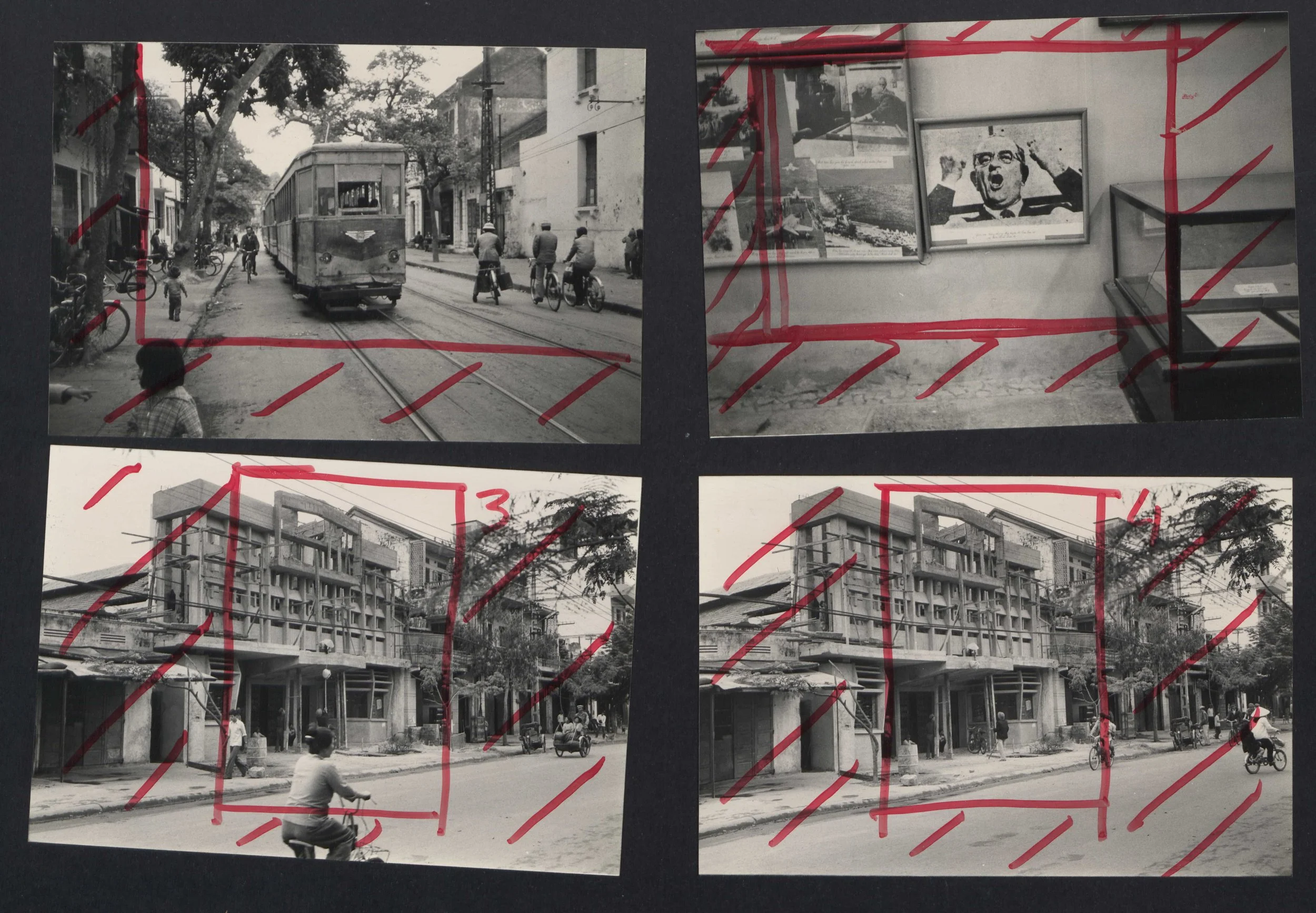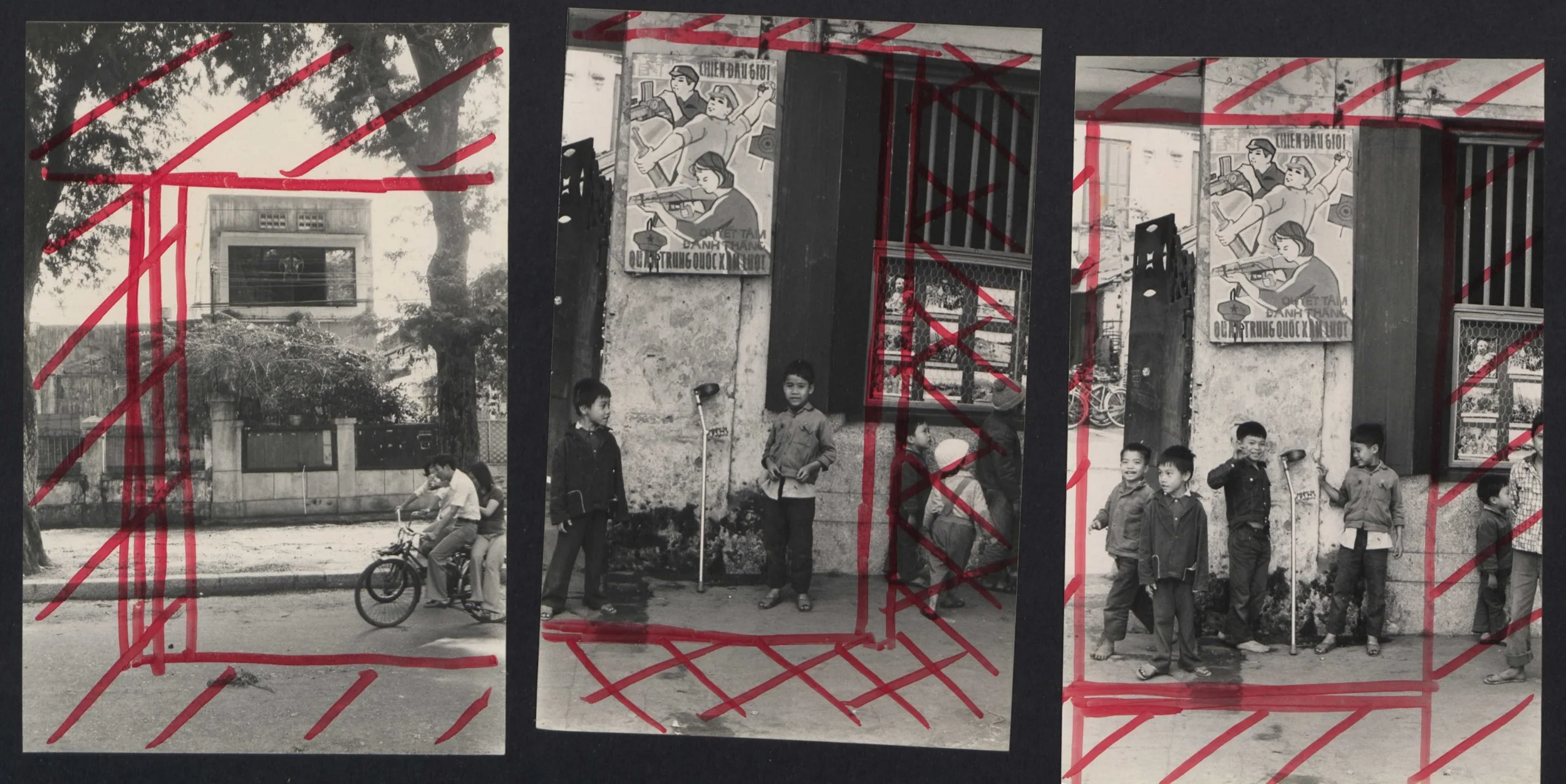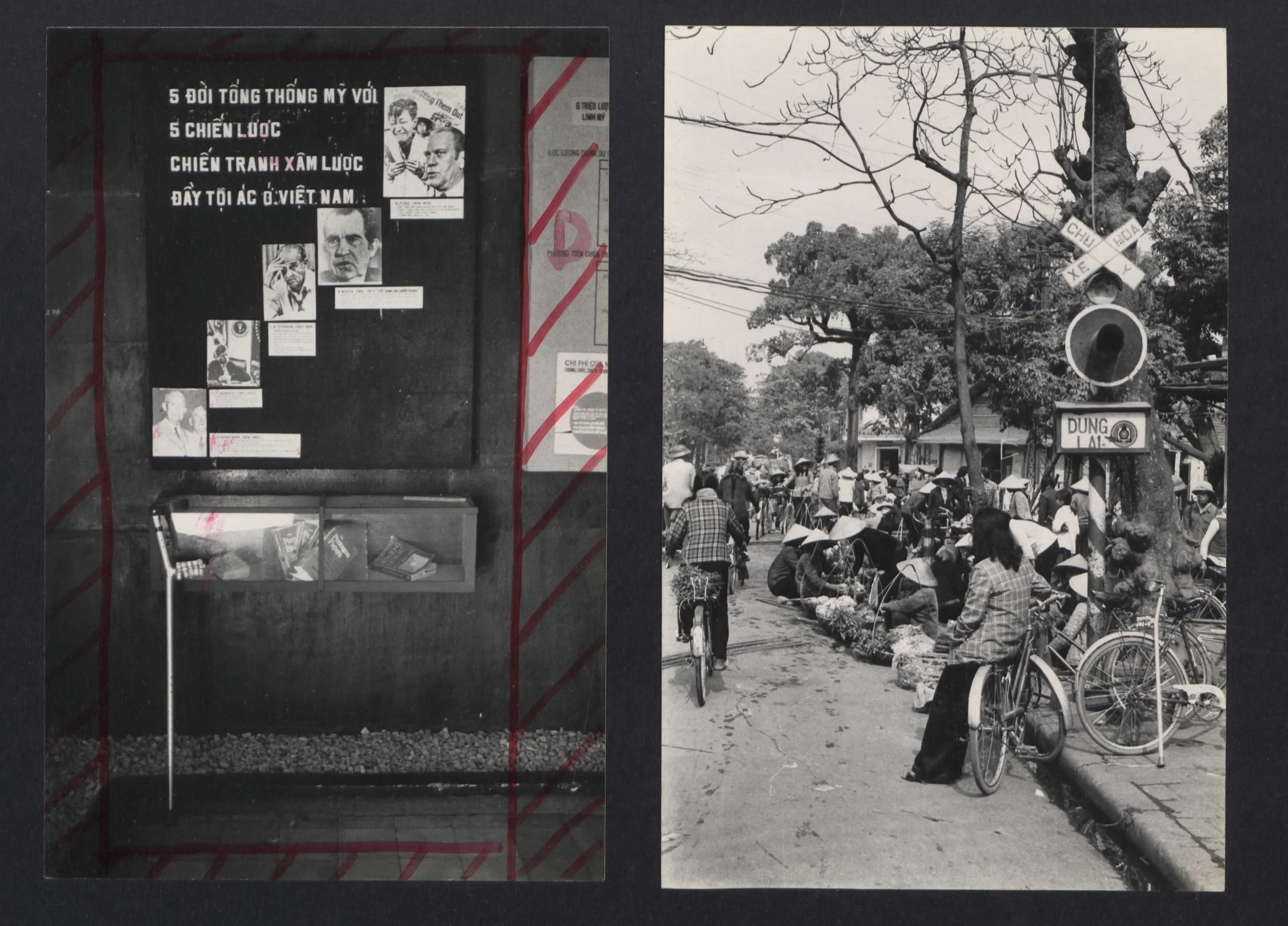Vietnam project
“The lack of an adequate environment led Roland Van den Berghe, at least in part, to seek out an environment of his own for his art. With his participation projects, the artist created a personal ‘space’—and unintentionally, a personal ‘audience’. A telling example of this is the so-called Vietnamproject, which took place and was realized—i.e. resulted in concrete works—between 1979 and 1980.
In the photo, a man is seen amidst ruins. Van den Berghe says the following about it in an interview I conducted with him in 1985:
This is the director of the Bach Mai Hospital in Hanoi, where the Christmas bombings took place in 1972. Twice in a row, this hospital was bombed flat on Christmas night. I met this man and saw the footage the doctors had taken during the bombings—of the building collapsing, and patients and hospital beds sliding downwards... (...) Something unbelievable happened here (...). I was in Vietnam with a group of nine Dutch people. After the Chinese invasion of Vietnam, people from the Medisch Comité and Comité Twee had to go assess how much of the material they had supplied to Vietnam—like X-ray machines—had been damaged. The trip lasted three weeks, and during all that time, those people looked at me as if I were a liar—walking on crutches but supposedly with nothing wrong with my leg. The Vietnamese helped me off the bus, up the stairs, and so on. But on the day we visited the Bach Mai Hospital, several people from the travel group decided to hand over the crutches I had brought to Vietnam to the hospital director as a symbol of solidarity or compassion with the tragedy in Hanoi.
Page from sketchbook, crutch Vietnam project, 1979–1980.
Photos crutch in Vietnam, 1979–1980. Photographer Roland Van den Berghe.
This was not staged by me; it arose, so to speak, from those three weeks of ‘lying’ on my part. They wanted to erase, to sublimate, that deceitful performance, and together they handed the crutches to the director of the hospital. The artist had taken on his sense of responsibility as an individual. Ordinary people—who normally never engage with art, never visit museums (...)—after three weeks, became sensitive to this kind of action, began to participate, and even went beyond that: they took over the artist’s power over the act and carried out something I myself would never do. I would never hand crutches to the director of a hospital—that’s already diplomacy, which I would call a lie (in the sense of ‘artifice’, JL). So you can see the process changing: from the lone person on crutches, doing something that is picked up by nine Dutch people, who hand over a crutch with all their heart and with tears in their eyes to the hospital director. And they still talk about it. And so do I. This is where you see that the artist’s action plays a very healthy role in society!"
This example clearly shows that the participants in the project are engaged in the formation of images and symbols whose form is their own concern—not something ‘demonstrated’ by the artist. In a certain sense, the artist is ‘put on the spot’ by the participants: he is no longer the sole and sanctified ‘shaper’ of the artwork. Instead, a mutual dependence arises: none of this would have happened if Van den Berghe had not brought the crutches, and had not, in the eyes of his fellow travelers, used them so deceptively. Through this provocation, he elicited the action.
Translated from the Dutch text: 1992, Roland Van den Berghe. Abatur – het in zichzelf besloten oog, by Jean Leering, in Arte Factum, Tijdschrift voor hedendaagse kunst in Europa, June-July-August edition; Antwerp.
Invitation To exchange reminiscences of those days with a friend, Vrije Universiteit Brussel, 1990.
Timeline
1976–1978
Development of de Kruk
1979 December – 1980 January
Roland travels to Vietnam with a group of Dutch participants
1979
Publication of de Kruk in Phoenix or Eagle, Which? Deel hebben, parallel to the lecture series Techniek, Bewapening en Veiligheid, Studium Generale, T.H. Technische Hogeschool Eindhoven
1980
36 Crutches, Bach Mai Hospital, Hanoi
1980
Day Khong Phai La Mot Ham Anh, Studio Show, Amsterdam
1984
Other Wargames, The Pentonville Gallery, London
1990
To exchange remininscences of those days with a friend, Vrije Universiteit Brussel
1990
Day Khong Phai La Mot Ham Anh, Galerie d’Eendt, Lineart, Internationale Kunstbeurs Gent
1997
Avodah Shebalayv, Kibbutz Yizrael, Gilboa
2000
Service of the heart, noname galerie, Internationale Fotobiënnale Rotterdam
Photos crutch in Vietnam, 1979–1980. Photographer Roland Van den Berghe.





















